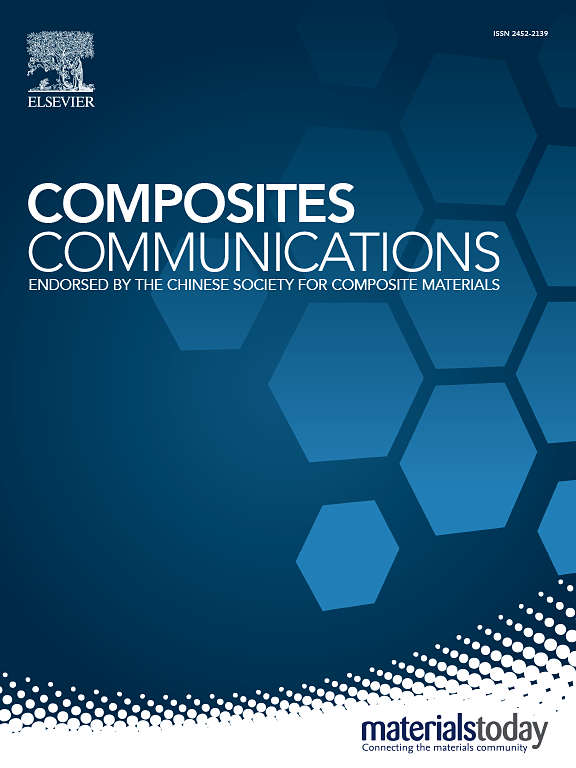Directional freeze-drying of PVDF-MoS2 composites for enhanced piezoelectric performance in triboelectric nanogenerators
IF 6.5
2区 材料科学
Q1 MATERIALS SCIENCE, COMPOSITES
引用次数: 0
Abstract
Poly(vinylidene fluoride) (PVDF), a piezoelectric polymer, exhibits excellent flexibility, ease of fabrication, and biocompatibility, with its β-phase being most electroactive. Enhancing β-phase content in PVDF via nanofiller incorporation often faces challenges like aggregation, poor dispersion and limited phase transition efficiency. To address this, we utilized a directional freeze-drying technique to embed 2-dimensional piezoelectric molybdenum disulfide (MoS2) nanosheets (NSs) into the PVDF matrix. This method facilitates the vertical alignment of MoS2 NSs within the PVDF matrix, promoting the formation of the β-phase and significantly enhancing the piezoelectric performance without the need of external high-voltage poling. The resulting composite achieved an 86.28 % β-phase content and a piezoelectric coefficient (d33) of 13.3 p.m./V at 2.0 wt% MoS2 NSs for the PVDF composite polymer. When applied in a triboelectric nanogenerator, the device delivered a peak output voltage of 1121 V and a power density of 16.2 W m−2, showcasing promising potential for energy-harvesting applications.
PVDF-MoS2复合材料定向冷冻干燥增强摩擦纳米发电机压电性能
聚偏氟乙烯(PVDF)是一种压电聚合物,具有优异的柔韧性、易于制造和生物相容性,其β相电活性最强。通过掺入纳米填料提高PVDF中β相含量,往往面临聚集、分散性差和相变效率有限等挑战。为了解决这个问题,我们利用定向冷冻干燥技术将二维压电二硫化钼(MoS2)纳米片(NSs)嵌入到PVDF基体中。该方法使MoS2 NSs在PVDF基体内垂直排列,促进了β相的形成,显著提高了压电性能,而无需外部高压极化。在2.0 wt% MoS2 NSs下,PVDF复合聚合物的β相含量为86.28%,压电系数(d33)为13.3 pm /V。当应用于摩擦纳米发电机时,该器件的峰值输出电压为1121 V,功率密度为16.2 W m−2,显示出能量收集应用的良好潜力。
本文章由计算机程序翻译,如有差异,请以英文原文为准。
求助全文
约1分钟内获得全文
求助全文
来源期刊

Composites Communications
Materials Science-Ceramics and Composites
CiteScore
12.10
自引率
10.00%
发文量
340
审稿时长
36 days
期刊介绍:
Composites Communications (Compos. Commun.) is a peer-reviewed journal publishing short communications and letters on the latest advances in composites science and technology. With a rapid review and publication process, its goal is to disseminate new knowledge promptly within the composites community. The journal welcomes manuscripts presenting creative concepts and new findings in design, state-of-the-art approaches in processing, synthesis, characterization, and mechanics modeling. In addition to traditional fiber-/particulate-reinforced engineering composites, it encourages submissions on composites with exceptional physical, mechanical, and fracture properties, as well as those with unique functions and significant application potential. This includes biomimetic and bio-inspired composites for biomedical applications, functional nano-composites for thermal management and energy applications, and composites designed for extreme service environments.
 求助内容:
求助内容: 应助结果提醒方式:
应助结果提醒方式:


